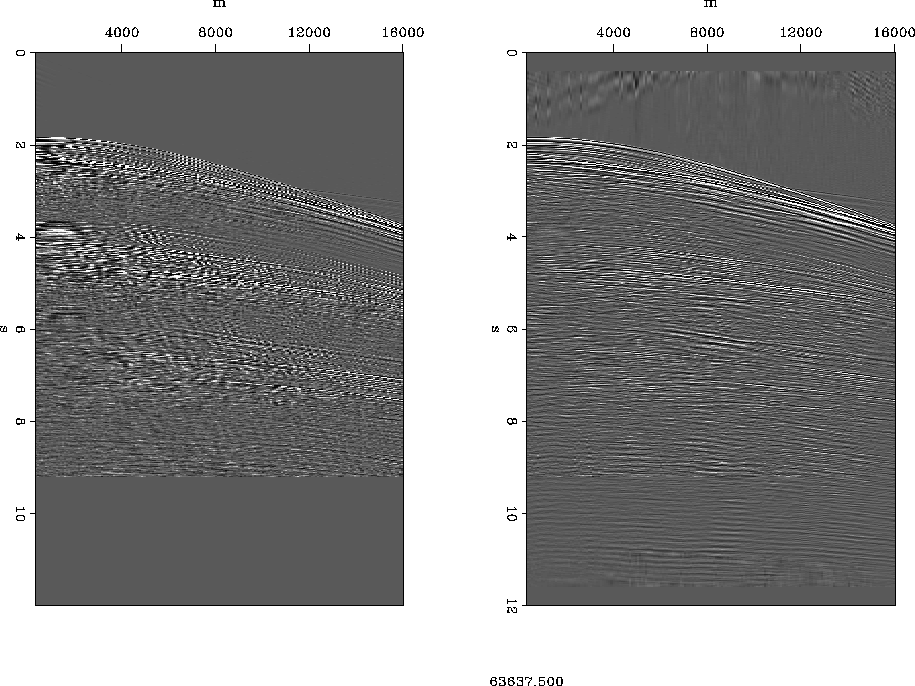 |
Figure 6 Original and multiple suppressed Gulf shot gathers.
This method seems able to suppress multiples fairly well, but the near offset sections do not provide enough deep primary energy to make a good test. To get an idea of the algorithm's behavior at larger offsets, some shot gathers were used as input. The technique is the same except that all offsets are used. Here I again use a separate filter for each trace. One possibility is a water bottom consistent filter estimation like that of Morley 1982, to help reduce the number of free filter coefficients, and reduce the possibility of predicting and removing primaries.
An input shot gather and output shot gather are shown in Figure 6. Here there are some deeper, high frequency events which are not obviously multiples. Some of these events do have zero offset times which indicate that they are most likely multiples, such as the event with a (projected) zero offset time of 4.1 seconds, 1.9 seconds after the primary at 2.2 seconds (water bottom time depth is 1.9 seconds). However, some are more likely to be primaries, such as the event with a zero offset time of about 4.6 seconds. Also interesting is that this method seems to do best at short offset, and might conceivably work well in conjunction with a method like the beam stack method of Holden 1996, which suppresses multiples well at far offsets, but not at near offset. The results are promising; a run on the full prestack data set will probably come later.
 |